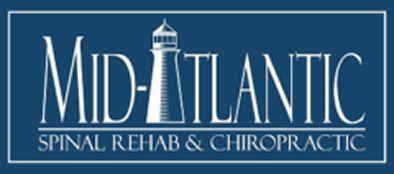More on Types of Intervertebral Disc Injuries Following Baltimore Car Accidents
In my last blog post we discussed disc bulges and their clinical significance. As we discussed these are pretty common findings that often do not cause a patient’s presenting symptoms. The next classification of disc injuries that I would like to discuss is what is called a disc protrusion. Technically, a disc protrusion is a type of disc herniation. By specifying the difference between a disc protrusion and a disc extrusion (more on this to come in the next blog post) a provider and radiologist can better understand the type of injury and the treatment that might best suit that particular injury.
A disc protrusion is a type of herniated disc that involves tearing of the outer annular fibers of an intervertebral disc. This is important to note because even without disc protrusion, torn annular fibers are known to be pain-sensitive fibers that can be the source of a patient’s pain. Once the outer tissue of a disc is torn it allows for migration of disc nuclear material to migrate and extend beyond the limits of the normal disc space. Typically this migration is a backwards movement. By definition, a disc protrusion is a type of herniation where the protruded material is wider than it is long. That is, the base of the lesion is broader than the depth of the lesion. You can see a picture of a disc protrusion here.
Discs can protrude in many different directions, and as a result, they can cause various different symptoms. There can be central protrusions, where there is some spinal canal stenosis and inflammation. There can also be paracentral or paramedian protrusions where the swelling and protrusion occurrs off of the mid line, with a bias towards either the left or side side.
Clinically speaking paramedian disc protrusions can cause symptoms of back or neck pain with concurrent numbness, tingling, and/or weakness down the affected arm or leg. That is, they can present with these symptoms but that is not always the case.
The most clinically significant types of disc protrusions are called lateral disc protrusions. These protrusions move disc material into that lateral recesses, or the lateral canals. The reason that these are so clinically significant is because they either directly touch or chemically alter the dorsal root ganglia at this level and as a result are more likely to cause the numbness, tingling, or weakness that we classically suspect when dealing with disc protrusions.
It is important to note that not all disc protrusions are the same. That is, some can cause pain in the absence of numbness, tingling, and weakness. And some can cause numbness, tingling, or weakness in the absence of pain. Additionally, some will respond well to chiropractic care, spinal manipulation, and soft tissue modalities, and some fill have no response at all.
This is why it is extremely important that when treating for injuries sustained in Baltimore car accidents that involve headaches, neck pain, and back pain with numbness, tingling or weakness, that you work with providers that understand the difference of these types of injuries. That is, classifying the morphology (shape) of an injured disc not only impacts care in the moment, but may well impact how much a patient can recover. The best way to image a disc protrusion is by way of an MRI of the neck or back. I routinely refer out for these tests on my injured clients.
In my next blog post I will write about another type of herniated disc, known as a disc extrusion.
For now, if you or someone you know is suffering from a disc protrusion that has resulted in back pain, neck pain, or numbness, tingling or weakness, please contact Mid-Atlantic Spinal Rehab & Chiropractic. We would be happy to help!
Dr. Gulitz
